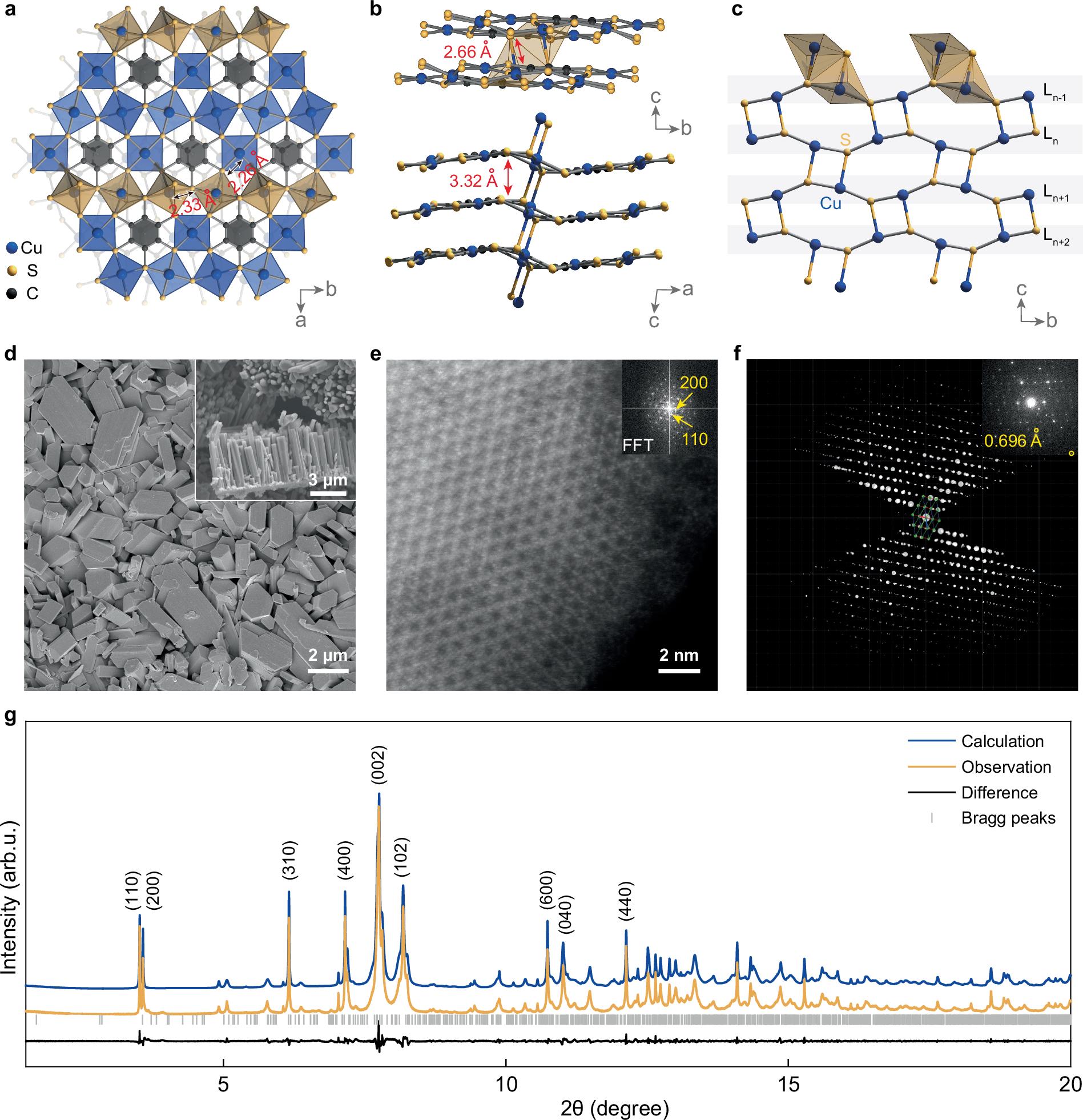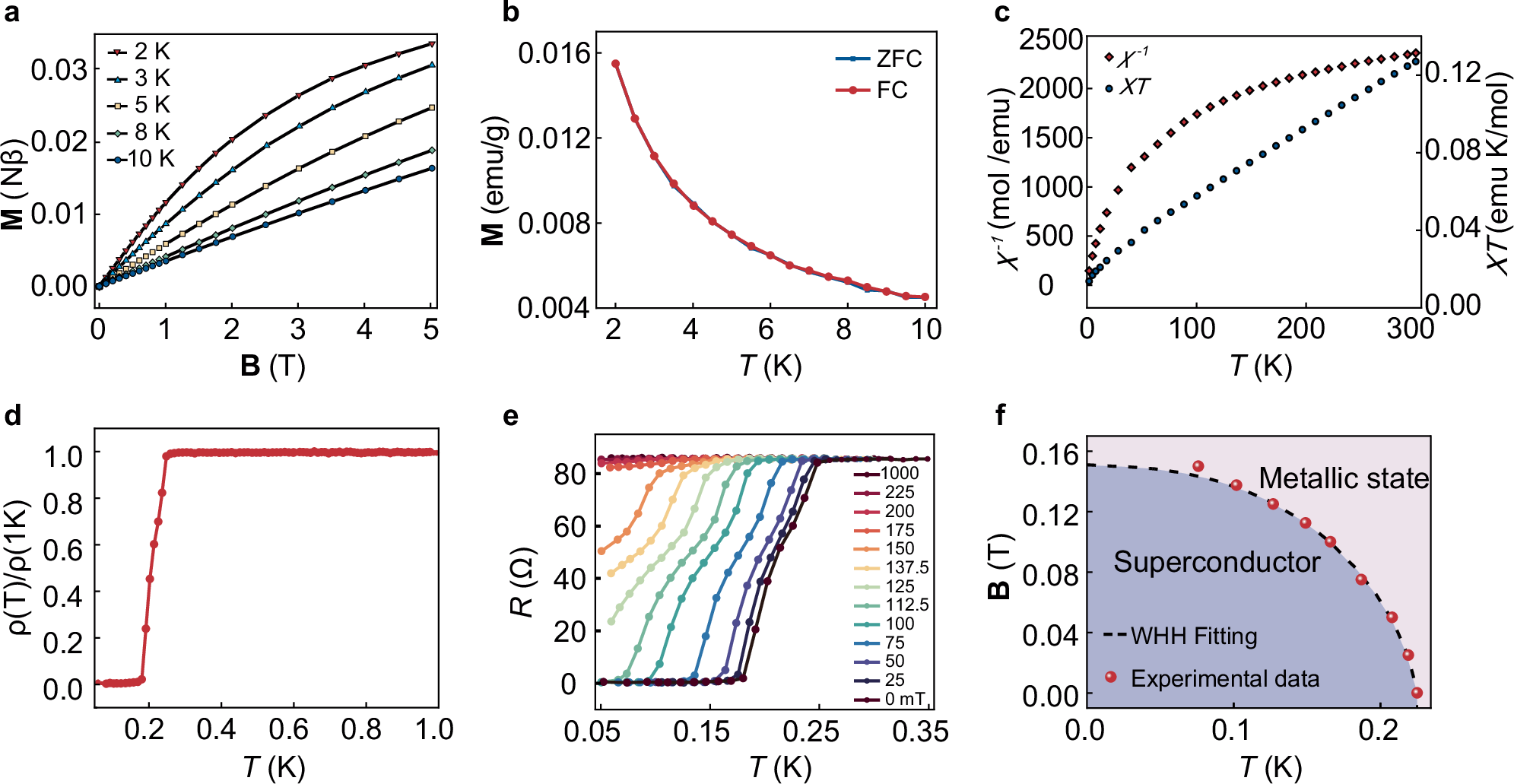Two-dimensional coordination polymers (2D MOFs) have rapidly emerged over the past decade as a promising class of electronic materials. With their d-π conjugated networks formed through the self-assembly of metal centers and conjugated ligands, these materials exhibit exceptional charge transport properties, challenging the traditional view of MOFs as insulators. The lattice of 2D MOFs is highly modular, allowing extensive selection of metal ions and organic ligands, while the coordination field governs in-plane electron delocalization and interlayer coupling, effectively tuning electronic states. Furthermore, lattice dimensions impact electron correlations and band dispersion, and the distinctive long-lattice periodicity of 2D MOFs holds potential to induce rich quantum transport effects and spin interactions. This offers researchers a versatile framework for exploring a variety of exotic condensed matter phenomena.
Recently, the Jin-Hu DouResearch Group from the School of Materials Science and Engineering at Peking University (https://dou-group.com/) published a study inNature Communications titled “Synthesis and Structure of a Non-van-der-Waals Two-Dimensional Coordination Polymer with Superconductivity.” The research team successfully synthesized high-quality, large-sized single crystals of the Cu3BHT coordination polymer, revealing its precise crystal structure for the first time. The study demonstrates a quasi-two-dimensional Kagome structure with non-van-der-Waals interactions, presenting a stark contrast to the previously hypothesized graphite-like layered structure. The high-quality single crystals enabled atomic-level structural determination, confirming that Cu3BHT features interlayer covalent Cu-S bonds. The Cu3BHT single crystals exhibit intrinsic metallic transport properties, with conductivity reaching 103S/cm at 300 K and increasing to 104S/cm at 2 K. Notably, a superconducting transition was observed at 0.25 K. Together with theoretical calculations, the study further elucidates the superconducting mechanism, attributed to enhanced electron-phonon coupling and electron-electron interactions driven by the material's unique structure.
This study elucidates the structure-property relationship between the crystal structure and superconducting properties of Cu3BHT single crystals, laying a crucial foundation for the development of superconducting coordination polymers and holding promise for advancing research on quantum states within coordination polymers. The co-first authors of the paper are Zhichao Pan, a doctoral candidate from the School of Materials Science and Engineering at Peking University, and Dr. Xing Huang from Technische Universität Dresden, Germany. The corresponding author isJin-Hu Doufrom the School of Materials Science and Engineering, Peking University. Key collaborators include Professor Jian Wang from the School of Physics at Peking University, Professor Yu-Qing Zheng from the School of Integrated Circuits at Peking University, Professor Lei Sun from Westlake University, Professor Wei Xu fromtheInstitute of Chemistry Chinese Academy of Sciences, Professor Xiaoming Zhang from Ocean University of China, Professor Jian Li from Nanjing University, and Professor Ying Xing from China University of Petroleum.
This work was strongly supported by the Ministry of Science and Technology and the National Natural Science Foundation of China.
Full text available athttps://www.nature.com/articles/s41467-024-53786-1.

Figure 1.Single crystal structure ofCu3BHT.

Figure 2.Electrical transport and magnetic information of Cu3BHT.